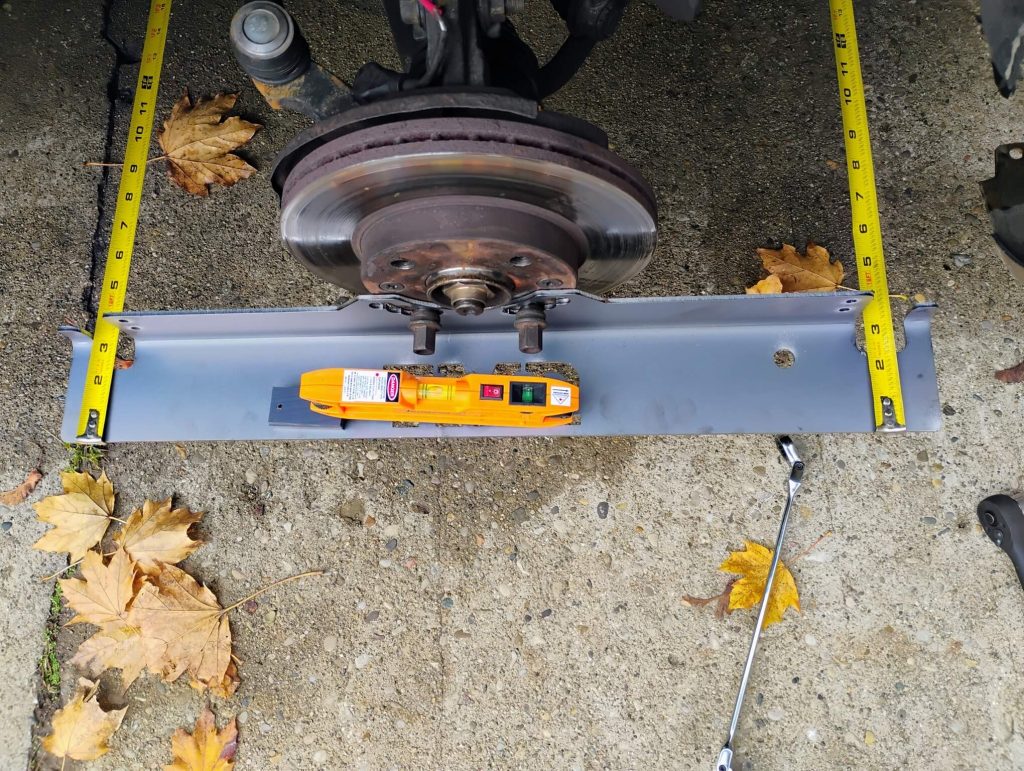Wheel alignment might seem a bit mysterious at first, but it’s actually quite straightforward. I initially bought a set of inexpensive alignment plates off eBay, but they proved to be unreliable—there were too many variables to get consistent, repeatable measurements. Eventually, I upgraded to a set of TMR alignment plates. These are sturdy, accurate, made in the USA, and bolt directly to the wheel hub.
Because they mount to the hub, setup requires a bit more effort. The wheels must be removed, and in my case, the brake calipers also had to be taken off to make space for the plates. Despite the extra steps, the precision and repeatability they offer make the process well worth it.
However, there were a few challenges during the alignment process. First, the gear shift must be in neutral—otherwise, rotating one wheel causes the opposite wheel to spin in the other direction, making it impossible to keep the alignment plates parallel. Even in neutral, one wheel needs to be held in place with an object to prevent it from turning.
Second, once the plates were aligned, I encountered obstructions underneath the vehicle that prevented the measuring tape from running straight between them. To work around this, I had to tilt the plates slightly to create a clear path for the tape. Since both plates needed to be set at the exact same angle, I used a bubble level held at an angle with a piece of scrap plastic as a makeshift gauge.
Despite these complications, I was able to achieve a high degree of alignment accuracy—and the vehicle tracked perfectly straight afterward.


Leave a Reply